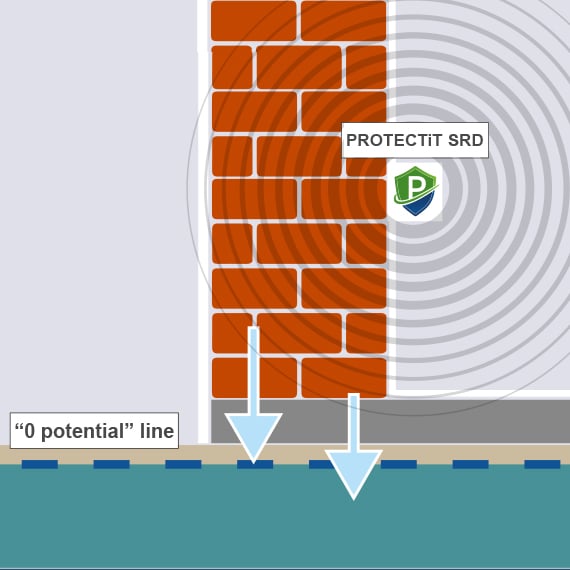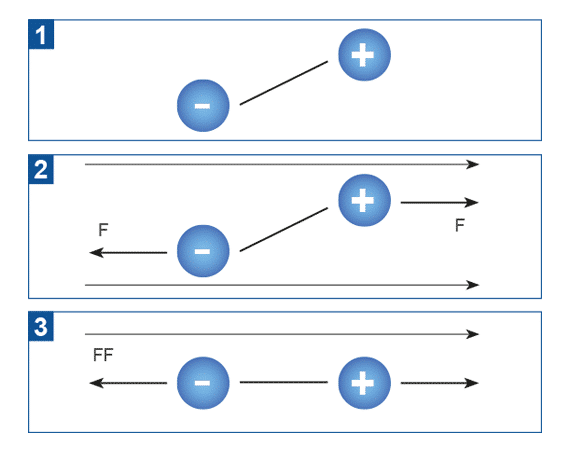PROTECTiT SRD, with “Multi-frequency Impulse Resonance” technology, is the most advanced and effective electro-physical masonry dehumidification system.
PROTECTiT SRD acts exclusively in the walls, opposing attraction between the capillary pores of the masonry and the water molecules (dipoles), thus neutralising the strength of rising damp in masonry structures. Its action is followed by an effective and permanent drying of walls.
SRD device generates a train of impulses that resonate in the damp walls and, by acting on the overall electrostatic charge, lower the zero potential line on all types of material constituting the building structure.


Multi-frequency Impulse Resonance technology interacts with the dipoles of water, triggering the dehumidification of building structures.
PROTECTiT SRD uses to its advantage the same effect that generates rising damp, it generates an electromagnetic field inside the wall structure that resonates with the water molecules and their structure, stopping their rising.
PROTECTiT SRD counters the natural diffusion process of capillary rising damp and determines its elimination from masonry structures.
This technology is absolutely functional and guaranteed in cases of capillary rise humidity.
Figure 1: Dipole of water in absence of electric field.
Figure 2 & 3: Dipole of water when electric field starts to have effect.




As you can see in the graphic, moisture permeates from the ground through capillary action.
Just like a sponge the water transports minerals including damaging salts which are deposited in the wall and on the wall surface. In the areas where the moisture can evaporate the damage is most visible.
Dampness also provides a fertile environment for mould growth. This can have serious consequences on the health of those who live in these areas. The damage can range from simple colds to allergies and asthma, from gastrointestinal and dermatological diseases to the proliferation of mould spores in the organism.

ProtectiT Special Protection provide market leading products & systems that safeguard and maintain the life-span of your asset. Our range of sealers, cleaners, aero-abrasive cleaning systems and protective devices serve clients in the fields of: Architecture, Cleaning & Conservation, Design & Construction, Restoration, Infrastructure.
